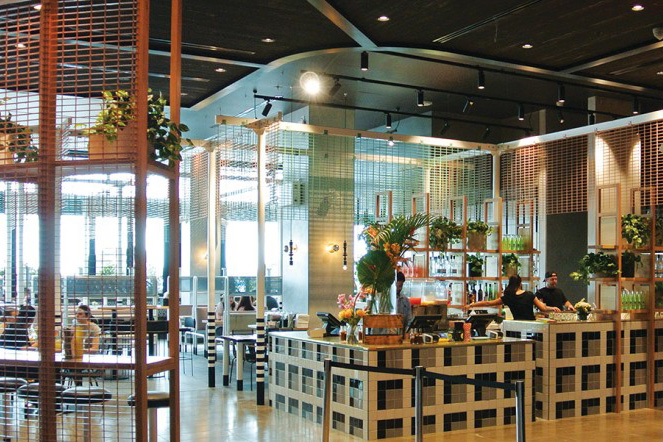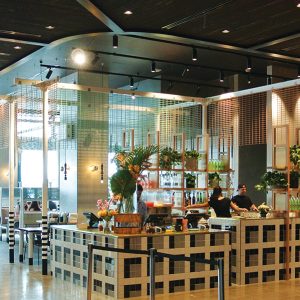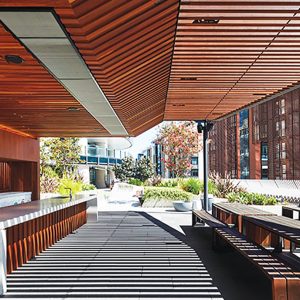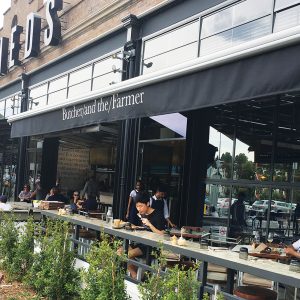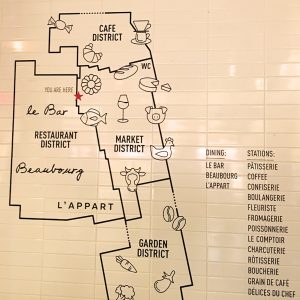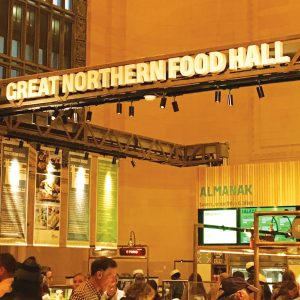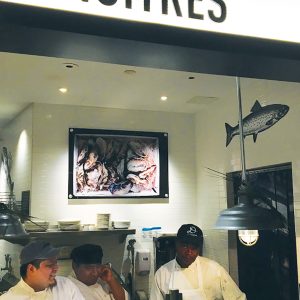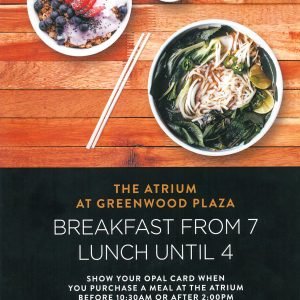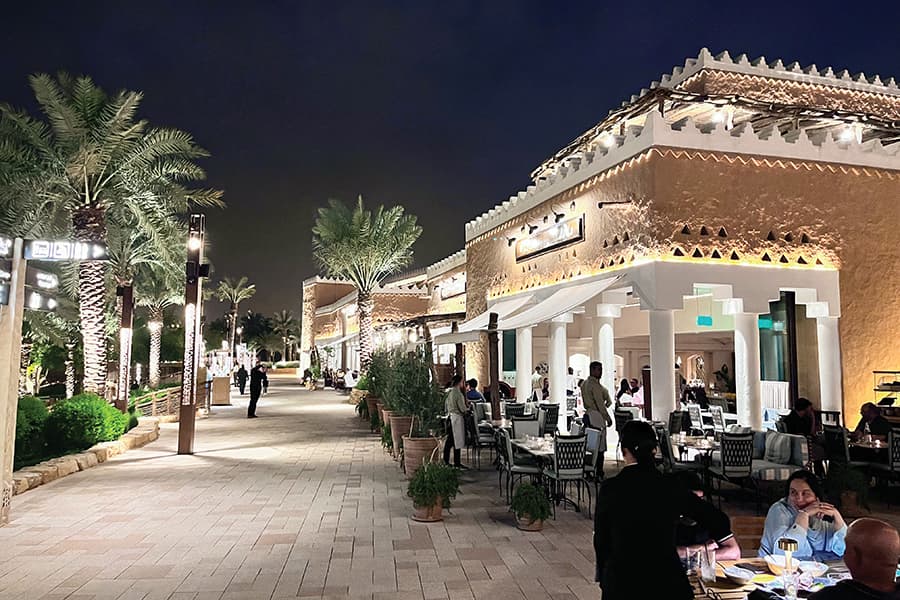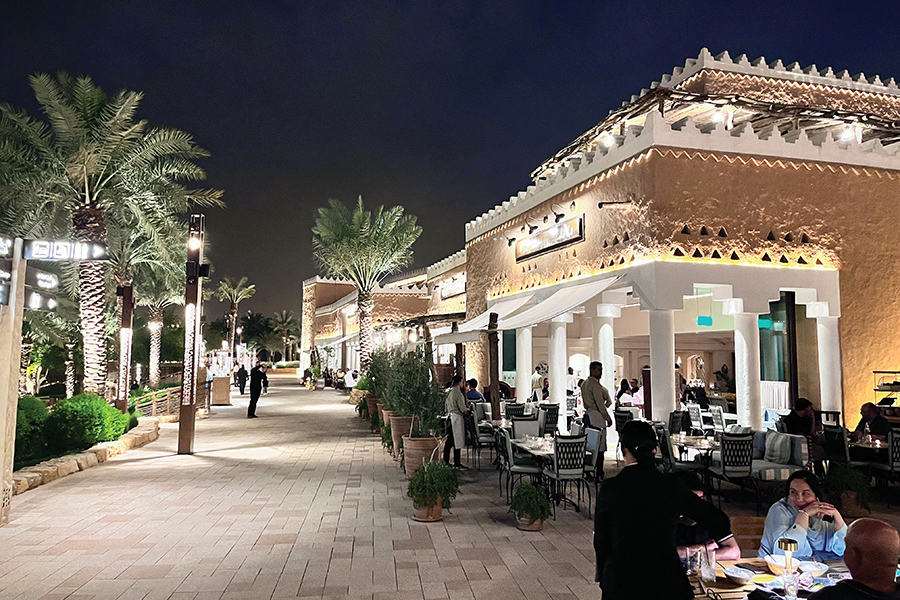In this first of a two-part article, Francis Loughran identifies ‘image’ as a key factor in the success of a food court. But more importantly, he states emphatically that ‘image’ can’t be achieved or maintained without a major and ongoing input from centre management. It doesn’t matter how good your food court is, if you don’t have a sound management plan the wheels can fall off within six months!
As the shopping centre industry continues to roll out food and hospitality precincts faster than any industry and any time in history, it is time to think differently about how we not only masterplan and deliver these precincts but also how we manage the customer experience from this revenue and asset-growth cash cow. As retail centre managers, we cannot leave our operating standards in the hands of our food retailers, as this often results in a range of lower-than-acceptable food service standards ranging from cash-only signage to filthy tenancies with chicken defrosting in the wash basin.
How will your new food court, cafe court, dining terrace, rooftop venue, cafes or fresh-food market maintain and grow its rent-generating capability?
Image is everything when it comes to food and hospitality within your retail centre, airport, mixed-use development, lobby cafe, waterfront precinct or tourism destination.
Spending on food is increasing globally and the shopping centre industry must think differently if it is to capture its share of the ever-increasing food dollar spend outside the home.
Eating in and out in Australia
Our craving for exciting flavour experiences shows no signs of diminishing and we still love new flavours and inspiring food creations. However, experiencing the adventurous side of food consumption is happening more when dining out than in kitchens at home. One in three Australians say they eat out and restaurants, cafes and modern casual dining outlets are our favourite places to do so, followed by fast food chains, food courts, and clubs and pubs.
- Chadstone, VIC
- Chadstone, VIC
- Barangaroo, NSW
- Tramsheds, NSW
Dinner is still our main meal of the day and our dinner choices remain fairly consistent with staples such as meat and veg or salad, pasta, fish and veg or pizza as our top choices. Despite our fascination with cooking pop culture in recent times, more than half of Australians see cooking as a chore or only as a way of caring for others in everyday life. (Source: IPSOS food and beverage report: January 2016)
From any new projects’s development approval to opening day, the very best specialist teams from feasibility, market research, architecture, interior designers, food leasing, food consultants, etc, are called upon to advise and deliver state-of-the-art food and beverage projects. This process costs hundreds of millions of dollars and person-hours to ensure that new food destinations deliver the promise on opening day. However, from that day onwards, who within the management teams is charged with the skills and responsibility to maintain the food and beverage vision, operations and positive hospitality experiences? In less than six months the asset starts to lose its shine and ultimately its appeal to the discerning customer.
Post the initial opening, does the process of lease assignment start to bastardise the once-perfect food and beverage mix? Are the original food operators the only ones to still share the vision of the destination? Who is managing the food and beverage asset’s presentation and operating standards on a daily basis?
It is inevitable that everyday ‘wear and tear’ will result in stained upholstery, dead planting, rocking table legs, chipped crockery, handwritten signs, Coke signage and garbage bags piled up next to customer seating. Shabby and unkempt dining environments ultimately do not drive the discerning customer or bigger spender to return. Spenders are put off by poorly maintained spaces whether they are cafe courts, food courts, terraces or waterfront dining promenades. It is a well-known hospitality fact that image is everything when it comes to food as food is fashionable. When the competition offers a better experience, the customer is sure to move on to what’s new and different.
Evaluation in the post-delivery of any asset is crucial in establishing how best to maintain the asset and to maximise its appeal and future marketing. This requires the asset, leasing and centre management teams to formulate a strategy that combines the skills of each team with the retailer controls within the food leases and special conditions. This ensures both the food tenancies and the common areas are maintained to the best of their ability and that the food and beverage offers and experiences are proactively marketed in order to maximise sales opportunities and grow asset value.
Even before opening day, it is vital that an experienced team comprising of operations, food, retail design, leasing and marketing develop a plan on how best to maintain and grow the new food and beverage asset. The development team must remain proud of the new development and this can only happen through a planned post-opening strategy that evaluates the financial, comfort, service and food experience, one that aims to ensure the asset remains beautifully presented, offers evolving menus and concepts, marketing and promotional offers and, most of all, motivates its retailers to deliver the best food and service possible. Eating out is about much more than something you put into your mouth; it is made of many touchpoints and, as retail and food professionals, we must break each of those touchpoints into modules that can be evaluated and benchmarked so it can be maintained to the agreed standard by lease controls, retailer education and culinary and marketing creativity.
- Brookfield Place, New York
We all have to eat; where we spend our money and choose to return time and time again is determined by the experience we receive when visiting any one of a retail centre’s food and beverage outlets. First impressions count, how we manage our food precincts determines how they maintain their pulling-power. Simple basics such as the physical and sensual attributes are vital in maintaining a positive first impression. Key attributes, including sense of arrival, cleanliness, hygiene, comfort, furniture and fittings, maintenance, temperature, security, lighting and odours, all affect mood and spend.
Positive residue is the ability of your centre’s food and beverage to impress customers and thereby fulfil the three key principles of maximising food and hospitality MAT:
1. Ensure your centre remains the first choice for casual eating, dining and entertainment
2. Maximise your customers’ spend on food and beverage
3. Ensure your customers return more often and continue to spend.
All centres are aiming for this, but how do you work towards these three key principles? Customer satisfaction analysis and future trends research confirms you should “focus on the customer and a systematic service orientation” and in doing so, you grow your food precinct’s positive residue and therefore, your centre’s success. (Source: ECE Market Research –The Importance of Service in Shopping Centre. No.2/2016).
Today’s retail centre and mixed-use developments are characterised by their dynamism in hospitality experiences and food choices. Centres pushing the food and beverage envelope include Chadstone, Emporium Melbourne, Barangaroo, Pacific Fair, Dubai Mall, Mall of Scandinavia, Mall of America and Westfield World Trade Center, New York and they are doing so because pressure to win the food dollar is growing as the density and diversity of affordable offers within our home, work, shopping and recreational environments ever expands.
Customer service remains one of the primary motivators for choice and spend maximisation. Today’s diners are savvy; if they are not totally satisfied with pre-service (attempting to make a reservation), service (over-priced wine, average food, tired interiors or rude waiters) or post-service, (service-recovery mechanism) they are sure not to return.
- Oculus, Westfield Trade Centre
Retail centre food and hospitality opportunity is infinite
Our shopping centres are perfectly placed to continue to strengthen their position as dining, tourism and entertainment destinations based upon their recent history of offering an excellent choice of safe, welcoming and affordable dining environments, in the city, suburbs and beyond. The advantage is real and the choices endless, with centres now breaking down boundaries by implementing chef concepts and Michelin-starred specialty restaurants as well as cafes, tea salons, food truck parks, farmer’s markets and rooftop venues. No other industry can claim to offer such an array of affordable dining and hospitality choices under one roof e.g. Pacific Fair’s Patio, Chadstone’s Dining Terrace or the ‘soon to open’ Hudson Yards, New York.
What’s driven this need to revolutionise the food offering? An article published in Bloomberg highlighted that Millennials, the big spenders of today, “view dining out as a social event (i.e. a chance to connect)” and that the “younger cohort has been identified as being more willing to spend on food away from home”. It’s a combination of education, travel, lifestyle, aspirational desires, social affiliation, technology and the desire to explore what’s new which has placed food at the heart of it all for many people.
The business of food is growing annually and is the fastest-growing category within retail spending in Australia today.
(Source: Americans’ Spending on Dining Out Just Overtook Grocery Sales for the First Time Ever. Bloomberg 2015).
It is difficult not to conclude this first part of a two-part article without saying it as I see it. ‘Food is the Future’ in our retail centres, corporate buildings, airports, entertainment and waterfront developments. If we wish to maximise the asset’s value and customer satisfaction, then a post-opening strategy for the first and preceding years needs to be developed which addresses the physical environment, food mix, comfort and hygiene standard, marketing and evolving menus.


